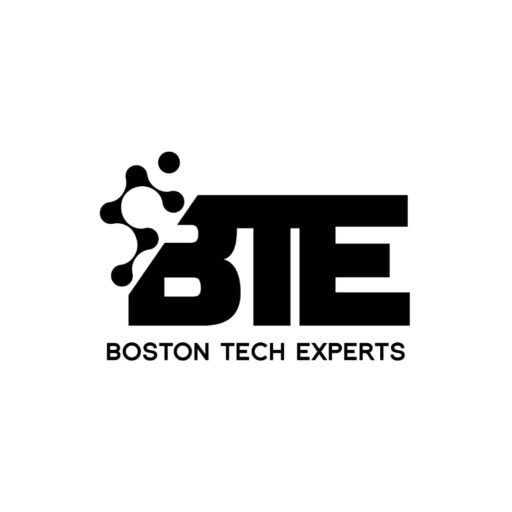
The question often arises in today’s digital landscape: “What are professional SEO services?” To truly stand out, it’s essential to leverage expert strategies that ensure the right audience notices your brand.
Boston Tech Experts, a leading marketing service provider, understands this approach’s intricacies. Through dedicated optimization efforts that combine technical expertise, creative content, and continuous analysis, we deliver measurable results that elevate your online presence.
Key Takeaways
- Expert teams manage technical and creative aspects of SEO to align with search engine requirements.
- Data analysis drives decisions, ensuring strategies adapt to real-time performance metrics.
- Integrating specialized tools enhances site speed, usability, and engagement.
- Higher rankings on platforms like Google depend on continuous optimisation.
- Visibility improvements translate to increased organic traffic and business growth.
“Ready to Skyrocket Your Business? 🚀 Let’s Chat! Unlock the Secrets to Higher Rankings and Explosive Growth – Contact Us Now!”
Introduction to what is Professional SEO Services
Adequate online visibility relies on structured collaboration between specialists who optimize every layer of your digital presence. A dedicated team combines technical audits, content refinement, and strategic adjustments to align with search engine priorities. This ensures your pages meet evolving standards while delivering value to visitors.

Overview and Importance
Behind every high-performing site lies meticulous planning. Experts analyse factors like title tags, internal linking, and URL clarity to strengthen page authority. These elements signal relevance to platforms like Google, directly impacting where your content appears in results.
Tailored strategies address unique challenges. For example, an e-commerce platform requires different optimisations than a local service provider. Adjustments might include improving mobile load speeds or restructuring navigation menus for intuitive browsing.
Your Path to Enhanced Visibility
Transparent reporting keeps you informed about progress. Metrics like organic traffic growth and keyword ranking shifts highlight what’s working. Regular updates allow swift adjustments, ensuring resources focus on high-impact areas.
Understanding how engines evaluate sites empowers smarter decisions. By prioritising user experience alongside technical precision, your content gains traction in competitive markets. This dual focus builds lasting authority, turning casual visitors into loyal customers.
Decoding what is professional seo services are
Navigating the complexities of modern search algorithms demands more than surface-level tweaks. Comprehensive optimization blends technical SEO audits, custom content creation, and strategic alignment with user intent. Unlike basic approaches, this method addresses every layer of your digital footprint to build lasting authority.

Central to this process is developing an SEO strategy tailored to your industry. Teams analyse competitors, identify high-value keywords, and map user journeys to prioritise improvements. For example, e-commerce sites often require structured data enhancements, while service providers focus on local search visibility.
Industry-specific marketing tactics further refine these efforts. A B2B company might emphasize whitepapers and case studies, whereas a retail brand could optimise visual content. Each decision stems from meticulous research into audience behavior and search trends.
Behind these actions lies continuous performance tracking. Specialists monitor metrics like domain authority and conversion paths, adjusting tactics to maintain momentum. This adaptive approach ensures your digital presence evolves alongside algorithm updates and market shifts.
Enhancing Organic Traffic with On-Page SEO Strategies
Your website’s content and structure play pivotal roles in driving organic growth. You create a foundation for higher rankings and sustained visibility by aligning on-page elements with search engine requirements. Let’s explore actionable methods to refine these components.
Content Optimization Best Practices
Start by researching keywords that match your audience’s intent. Integrate primary terms naturally into headings, subheadings, and the first 100 words of your content. Avoid overloading paragraphs—keep sentences concise and scannable.
Focus on solving problems or answering questions your market cares about. Update older posts with fresh data or expanded insights to maintain relevance. Tools like Google Analytics help track which pages attract the most traffic, guiding future updates.
Crafting Effective Meta Tags and URL Structures
Meta titles and descriptions act as your content’s first impression. Include target keywords near the beginning, and keep titles under 60 characters. Descriptions should entice clicks while summarizing the page’s value.
URLS must be clean and descriptive. Use hyphens to separate words instead of underscores, and avoid unnecessary parameters. For example, yourdomain.com/blog/organic-traffic-tips signals the topic to both users and algorithms.
Audit these elements regularly to ensure consistency across your site. Minor tweaks can lead to measurable jumps in traffic over time.
Boosting Performance with Technical SEO
Behind every fast-loading website lies a foundation of technical precision. These optimizations ensure your pages load quickly, function smoothly, and meet search engine standards. Without them, even the best content struggles to rank.
Optimizing Site Speed and Mobile Experience
Slow pages frustrate visitors and hurt rankings. Start by compressing images and enabling browser caching. Tools like Google PageSpeed Insights identify issues like render-blocking code or oversized files.
Mobile responsiveness is non-negotiable. Over 60% of searches happen on phones. Test your site’s mobile layout using free simulators. Ensure buttons are easy to tap, and text scales correctly across devices.
Managing XML Sitemaps and Robots.txt Files
XML sitemaps act as roadmaps for crawlers. Update them whenever you add pages or change content. Submit the sitemap through Google Search Console for faster indexing.
Robots.txt files guide bots away from low-priority pages. To conserve crawl budget, block duplicate content or internal search results. Also, regularly check for errors that accidentally hide critical pages.
Analytics tools track how these changes impact performance. To spot lingering issues, monitor metrics like bounce rate and time on page. SEO experts use this data to refine strategies, helping businesses stay ahead of competitors.
Building Authority with Off-Page SEO Techniques
Your website’s credibility depends on more than just internal tweaks. External signals—like backlinks from trusted sources—shape how search engines view your brand. Earning these endorsements requires strategic relationship-building and consistent value delivery.
High-quality links act as votes of confidence. Focus on earning them through guest posts on industry blogs or collaborations with reputable publications. For example, a tech startup might contribute expert insights to a leading digital magazine, gaining exposure while boosting domain authority.
Effective Link Building Methods
Successful outreach starts with relevance. Target websites your audience already trusts. For example, a local bakery could partner with food bloggers or community event platforms. These connections create trust signals that algorithms recognise.
Public relations campaigns amplify this effect. Securing media coverage in niche publications positions your brand as an authority. Combine this with social proof—like customer testimonials—to reinforce credibility.
Technical SEO supports these efforts. Clean site architecture helps crawlers index backlinks faster, and regular audits ensure broken links don’t undermine progress. Pairing technical precision with strategic outreach creates a cycle of growing visibility.
Monitor results using tools like Ahrefs or Moz. Track referring domains and anchor text diversity to refine tactics. Over time, these steps solidify your site’s reputation, driving sustainable growth.
Developing a Tailored SEO Strategy and Expert Team Support
Crafting a successful online presence requires strategies shaped specifically for your audience. Generic approaches often miss the mark, leaving results inconsistent. Custom plans align with your target market’s behaviour, ensuring every effort drives meaningful growth.
Utilizing a Dedicated SEO Manager
A dedicated manager becomes your guide through the complexities of engine optimization. They analyse competitors, identify gaps, and prioritise actions that match your goals. For example, a local retailer might focus on geo-specific keywords, while a SaaS company targets technical content.
Regular check-ins keep strategies agile. If traffic dips or rankings shift, your manager adjusts tactics swiftly. This hands-on approach prevents wasted resources and maintains momentum toward your objectives.
Monthly Reporting and Strategy Sessions
Transparent reports highlight progress and areas needing attention. Metrics like organic traffic growth and conversion rates show how well your services resonate. These insights inform decisions during strategy reviews.
Collaborative sessions refine your roadmap. Maybe a blog series isn’t attracting leads, so you pivot to video content. Continuous tweaks based on data ensure your approach evolves with market trends.
According to industry studies, teams using monthly consultations see 30% faster improvements. Pairing expertise with adaptability keeps your strategy effective in the long term.
Targeting Local Markets with Local SEO Tactics
Reaching nearby customers requires a hyper-focused approach to stand out in neighbourhood searches. Local SEO tailors your visibility to users searching for products or services within specific geographic areas. This strategy bridges the gap between your content and community needs, driving foot traffic and online engagement.
Optimizing Your Google My Business
Your Google My Business (GMB) profile acts as a digital storefront. Complete every section—photos, hours, services—to boost local rankings. Encourage satisfied customers to leave reviews, as positive ratings signal trust to engines like Google.
Consistency in Name, Address, and Phone (NAP) details across directories prevents confusion. List your business on platforms like Yelp and industry-specific sites. For example, a plumbing company might prioritise HomeAdvisor or Angi to connect with local clients.
Building link partnerships with nearby organisations strengthens the local authority. Sponsor community events or collaborate with complementary businesses. For example, a coffee shop could team up with a bookstore, cross-promoting through blogs and social media.
These tactics align with broader industry marketing goals. Local SEO amplifies campaigns by connecting with audiences ready to convert. Track results through Google Search Console to refine your approach and maintain competitive momentum.
Leveraging Content for SEO and Business Growth
Content shapes your digital footprint and drives meaningful connections with audiences. Original, engaging material attracts visitors while encouraging them to explore your website longer. This reduces bounce rates and signal value for search engines.
Creating Quality, Keyword-Rich Content
Start by addressing your audience’s needs. Solve problems they care about through guides, tutorials, or case studies. For example, a local bakery might share recipes using seasonal ingredients, while a tech firm explains software updates in plain language.
Balance readability with keyword integration. Place primary terms in headings and early paragraphs naturally. Avoid stuffing—search engines penalize awkward phrasing. Tools like SEMrush help identify gaps between your content and that of your competitors.
Strategic Keyword Research and Placement
Effective research goes beyond volume metrics. Analyse user intent to choose phrases that match your goals. Long-tail keywords like “best running shoes for flat feet” attract targeted traffic compared to generic terms.
Structure content around clusters. Group related topics to build topical authority. For example, a fitness blog could link articles about stretching routines, nutrition plans, and recovery techniques. This approach aligns with how platforms like Google assess expertise.
Review performance monthly. Update underperforming pages with fresh data or expanded sections. Experts recommend A/B testing headlines and meta descriptions to maximise click-through rates. Consistent refinement keeps your strategy agile and results-driven.
Utilizing Data-Driven Analytics for Continuous Improvement
Data acts as the compass guiding your SEO journey. By analysing patterns and behaviours, you uncover actionable insights to refine your approach. This ensures every decision aligns with measurable outcomes rather than guesswork.
Tracking Key Performance Metrics and ROI
Start by configuring tools like Google Analytics and Search Console. These platforms reveal which pages attract the most visitors and how long they stay. Track bounce rates, conversion paths, and keyword rankings to gauge ROI.
Focus on KPIs that match your goals. For example, an e-commerce site prioritizes cart abandonment rates, while a blog monitors time-on-page. Custom dashboards simplify monitoring, letting you spot trends quickly.
Adjusting Strategies Based on Data Insights
When metrics dip, pivot swiftly. If specific keywords underperform, test alternatives or revise content. A/B testing headlines or meta descriptions can boost click-through rates in search results.
Regular reporting keeps your strategy transparent. Share updates monthly to highlight wins and address gaps. This collaborative approach ensures alignment with market shifts and algorithm updates.
Embracing Innovative SEO Techniques and Emerging Trends
The digital arena’s rapid changes require cutting-edge visibility strategies. Search engines continuously refine their algorithms, rewarding those who adapt quickly. Staying ahead means blending creativity with data-backed experimentation.
Adapting to Algorithm Updates and Market Changes
Consider how recent Google updates prioritize page experience metrics. A local bakery saw a 40% traffic increase after optimizing Core Web Vitals and adding interactive recipe tools. This agile approach kept them competitive amid broader industry shifts.
Advanced link-building strategies now focus on quality over quantity. One tech startup earned authoritative backlinks by publishing original research on AI trends. Their data became a go-to resource, organically boosting domain authority.
New tools like AI-powered content analyzers help identify gaps faster. Platforms offering real-time rank tracking enable swift adjustments to keyword targeting. Pair these with heatmaps to understand how visitors engage with your pages.
Partnering with professional SEO services ensures access to these innovations. They combine market foresight with technical expertise to future-proof your strategy. Continuous learning drives sustainable business growth in dynamic markets.
Conclusion
Elevating your online presence requires a blend of precision and adaptability. From refining on-page elements to streamlining technical performance, each optimization builds momentum toward higher rankings. Keyword research remains foundational, guiding content that resonates with your audience’s needs while aligning with search engine priorities.
Consistent data analysis ensures strategies evolve with market trends. Metrics like click-through rates and domain authority highlight what’s working—and where adjustments matter most. This agility keeps your digital footprint competitive amid algorithm updates.
Investing in strategic search engine optimization efforts establishes lasting authority. Partnering with experienced teams accelerates growth through tailored solutions. Their expertise transforms insights into actions, whether boosting local visibility or enhancing mobile experiences.
Ready to see measurable results? Prioritize continuous improvement through refined content, robust analytics, and technical excellence. These steps solidify your position in search results, driving sustainable traffic and business success.






